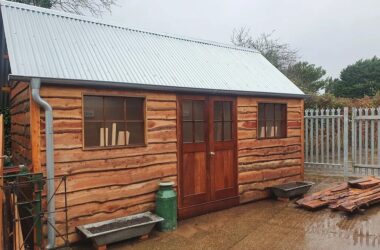As winter’s chill sets in, the construction industry faces a unique set of challenges related to cold stress. Workers exposed to cold temperatures are at risk of various health issues, making it imperative for construction firms to prioritize cold stress safety. In this guide, we’ll explore effective strategies to ensure the well-being of construction workers during cold weather conditions.
Understanding Cold Stress:
Cold stress occurs when the body loses heat more quickly than it can produce it, leading to a drop in internal body temperature. This can result in serious health conditions, including hypothermia, frostbite, and trench foot. Construction workers are particularly susceptible to these risks due to prolonged exposure to the elements.
- Adequate Training:
Ensuring cold stress safety begins with comprehensive training for all construction workers. Educate your team about the signs and symptoms of cold stress, emphasizing the importance of recognizing and responding to early warning signs. Training should cover proper clothing, work/rest schedules, and emergency procedures.
- Proper Clothing and Layering:
Appropriate clothing is a fundamental aspect of cold stress safety. Provide workers with insulated, waterproof, and windproof outer layers. Encourage the use of layered clothing to trap warmth close to the body. Insulated gloves, hats, and waterproof footwear are essential for protecting extremities from cold exposure.
- Scheduled Breaks:
Implementing regular breaks is crucial to preventing cold stress. Workers should have scheduled breaks in a warm and dry environment to allow their bodies to recover from exposure to cold temperatures. Encourage them to use break time to warm up and change into dry clothing if necessary.
- Monitoring Weather Conditions:
Construction firms should closely monitor weather conditions and adjust work schedules accordingly. During extreme cold spells, consider delaying outdoor work or implementing shorter shifts to minimize exposure. Regularly check weather forecasts to stay informed about temperature fluctuations and potential storms.
- Nan Inc Lawsuits:
While prioritizing cold stress safety, it’s essential to learn from the experiences of construction firms like Nan Inc. Understanding the importance of safety protocols and learning from past incidents, including legal challenges, can provide valuable insights for enhancing safety measures within your own organization. The lessons drawn from Nan Inc Lawsuits underscore the pivotal role of learning from past legal issues to strengthen business practices and ensure thorough legal preparedness in the industry.
- Wind Chill Factor:
Wind chill significantly contributes to cold stress, making it essential to consider when planning work schedules. The wind can remove body heat more rapidly, increasing the risk of cold-related illnesses. Factor in wind chill when assessing the potential dangers of working in cold weather and adjust precautions accordingly.
- Emergency Response Planning:
Develop a comprehensive emergency response plan specific to cold stress incidents. Ensure that all workers are familiar with the plan and know how to access emergency assistance if needed. Having designated personnel trained in first aid and cold stress response adds an extra layer of safety.
- Hydration and Nutrition:
Maintaining proper hydration and nutrition is essential for combating cold stress. Encourage workers to stay well-hydrated and consume energy-rich foods to fuel their bodies and generate internal heat. Warm beverages, such as hot soup or tea, can also contribute to maintaining body temperature.
- Ongoing Safety Education:
Cold stress safety should be an ongoing focus within construction firms. Regularly conduct safety meetings to reinforce proper procedures, share lessons learned, and address any emerging concerns. Keeping workers informed and engaged in safety practices contributes to a proactive safety culture.
Conclusion:
Ensuring cold stress safety in construction firms requires a holistic approach that encompasses training, proper clothing, scheduled breaks, weather monitoring, emergency response planning, and ongoing education. By prioritizing the well-being of workers during cold weather conditions, construction firms can create a safer and more productive work environment. Learn from the experiences of others, such as Nan Inc, and continuously strive to improve cold stress safety measures to protect your most valuable asset—your workforce.




